 Yazzie Family in Dennehotso, Ariz., on Wednesday, Aug. 14, 2024.
Yazzie Family in Dennehotso, Ariz., on Wednesday, Aug. 14, 2024.
Tapped: Season 3 Episode 12

An investigation reveals the deadly health toll of uranium mining on Navajo land, where contaminated water and broken promises have left generations grappling with severe health issues and fighting for their rights to clean water and a safer future.
Transcript
Zac Ziegler: A quick note up top. This is the last episode of our season, but please stick around until the end to learn about how you can help us with next season and hear the names of all the people who took part in putting this show together.
I might lose a bit of my movie geek credential for admitting this in public. Somehow, when it came to the Barbenheimer phenomenon, I managed to miss seeing Oppenheimer in theaters.
But, I did finally get a chance to watch it this past summer, albeit it on a notably smaller screen, my living room TV.
[music fades in]
Using U235, the bomb will need…sorry, the gadget will need a 33 pound sphere about this size or using plutonium, the 10 pound sphere…
ZZ: There's a scene in the movie where the actor Michael Angarano, who plays American physicist Robert Serber, is dropping marbles into a glass bowl.
Here is the amount of uranium Oak Ridge refined all of last month. (3 marbles drop into the bowl) And the Hanford plant made this much plutonium (2 marbles drop into the bowl).
ZZ: Those marbles are a stand-in for the amount of radioactive material they need to mine and refine to build up the first atomic bombs.
Paola Rodriguez: While that story has a lot of perspective from the southwest, namely Los Alamos, New Mexico, it's lacking in another side of the story that partly happened here in Arizona: the people, many of whom were Native Americans, who worked in the mines, unknowingly exposing themselves to toxic material… all for the sake of winning the war.
ZZ: At the end of the movie, Robert Oppenheimer, played by Cillian Murphy, is left confiding in Albert Einstein about the consequences of his research…
[music fades in]
Oppenheimer: When I came to you with those calculations, we thought we might start a chain reaction that would destroy the entire world?
Einstein: I remember it well. What of it?
Oppenheimer: I believe we did.
ZZ: The film version of Oppenheimer then begins imagining growing nuclear arsenals and intercontinental ballistic missiles that lead to a world on fire, and fade to black.
[music fades out]
Katya Mendoza: But those were imagined harms that, fortunately, have not been realized. However, there are real-world consequences, not just in the places where atomic bombs have been set off or where nuclear reactors melted down, but in places much closer to home.
[theme music fades in]
This is Tapped, a podcast about water. I’m Zac Ziegler.
PR: I’m Paola Rodriguez.
KM: And I’m Katya Mendoza.
PR: Native families across the Navajo Nation carry deeply rooted mistrust—not just towards mining companies but also the federal government.
KM: So why did the companies get the profits, when families got poisoned land and bodies?
[theme music fades out]
ZZ: Paola leads things off.
[nat sounds of nature]
 Monument Valley, an iconic landmark of the American Southwest.
Monument Valley, an iconic landmark of the American Southwest.
PR: Monument Valley, straddling the Arizona-Utah border, is a breathtaking desert landscape where towering red sandstone buttes and spires rise from the open plains. Its rich colors and dramatic formations, sculpted over centuries, create a timeless and iconic atmosphere. Sacred to the Navajo Nation, this expansive region has inspired the classic image of the Wild West.
[nat sounds of nature]
PR: What was once John Wayne country is also home to a darker side of history.
[nat sounds of nature]
Lewis: ...Under this tree, between the tree, that's where they, she used to live, but that house is no longer there.
Paola: Did they demolish it because it was contaminated?
Family: Mhmm
PR: Behind Monument Valley sits Dennehotso, a community with a population of 560 residents. What would be considered barren land to many was home to the few natives living here, like Lewis Yazzie.
Lewis Yazzie: A lot of people from Dennehotso used to work here. You know where that sand is going up to meet the ridge over there…There's a trail that goes up there. Some have little knots where you have to climb up with the wire rope. People work from there every day... They walked to work. And the trail was right here behind us, and they used to make their trail here. So those people are gone too, all those people that work the mine here.
PR: The Yazzie family settled in the area before the 1940s and was led by his dad Luke Yazzie Sr.
PR: The oldest of their 11 children, Luke, is named after his dad. He recalls what it was like growing up.
Luke Yazzie Jr: Right up here, where the mine…used to be, and that's where we herd the sheep. That's where we've been. That's where we live.
PR: Their small two-bedroom family home resides less than two miles away from what would eventually become known as Monument #2 Mine.
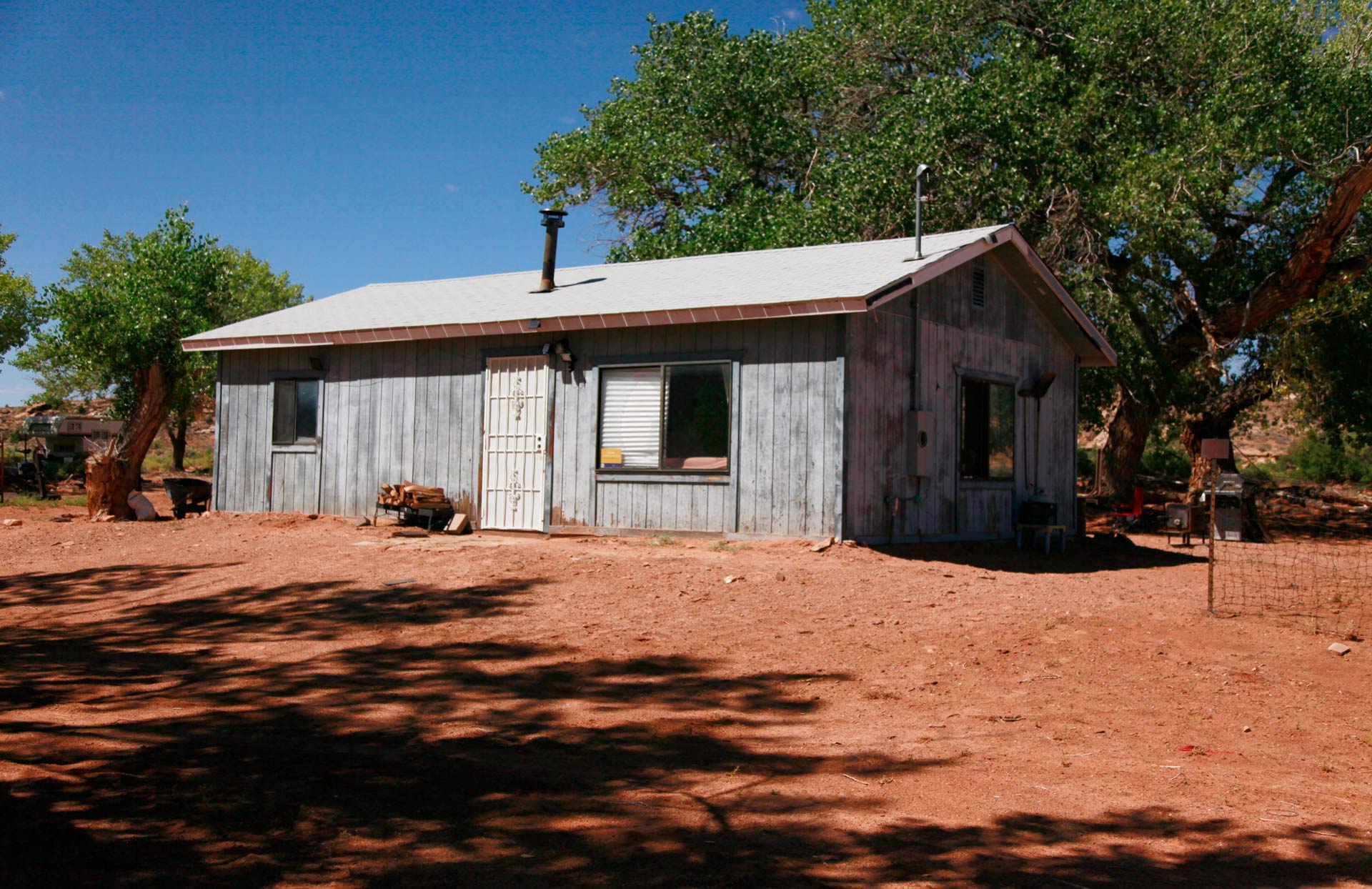 VIEW LARGER The Yazzie family home in Dennehotso, Ariz.
VIEW LARGER The Yazzie family home in Dennehotso, Ariz. [music fades in]
PR: In 1942, the elder Luke found a rock near his home in the valley. At the time, he believed it was gold. Unsuspecting to him, it was something more valuable…uranium
KM: Declassified Department of Defense documents show that the ore that Luke found contained some of the purest uranium that would be used during and after World War II.
[music fades out]
Luke Yazzie Jr: And then, they would, uh, dynamite the uranium. Those dust would come... Then we have water in the bucket, and we drink out of it. And then my mom cooks out of it…and then our dad would come home with all that dust, uranium dust, all over his clothes, his shoes…
KM: Like gold, uranium is where you find it. The Colorado Plateau, where the Yazzies live, was considered the best potential domestic source. Companies like the Vanadium Corporation of America, also known as VCA, took advantage of the national push for domestic uranium.
KM: But it wasn’t just companies. People like Elton Britt, a musician from that era, would try his hand at mining. Britt’s wife wrote “Uranium Fever”, a song about what it was like searching for uranium in the 1950s.
[Elton Britt Uranium Fever fades in]
Uranium Fever: Well I don’t know but I’ve been told uranium ore is worth more than gold. I sold my cad. I bought me a jeep. I got that bug and I can’t sleep. Uranium fever has done and got me down…
[music fades out]
KM: The federal government’s Atomic Energy Commission actively promoted uranium prospecting, aiming to supply its atomic energy program with home-mined resources.
[music fades in]
Song: Well I had a talk with the AEC and they brought out some maps that look good to me and one showed me a spot he said he knowed. So I straddled my jeep and headed down the road…
[music fades out]
KM: As a result, work in the mines carried on relentlessly, driven by the escalating demand for radioactive materials during the Cold War arms race with the Soviet Union.
KM: Monument #2 Mine would become the most productive uranium site in Arizona.
PR: But as prospecting opportunities arose, miners were left out to dry. Lewis Yazzie says his dad Luke, who found Monument #2 mine and showed prospectors the site, was only given a bottle of soda for his discovery and a pickaxe to go to work.
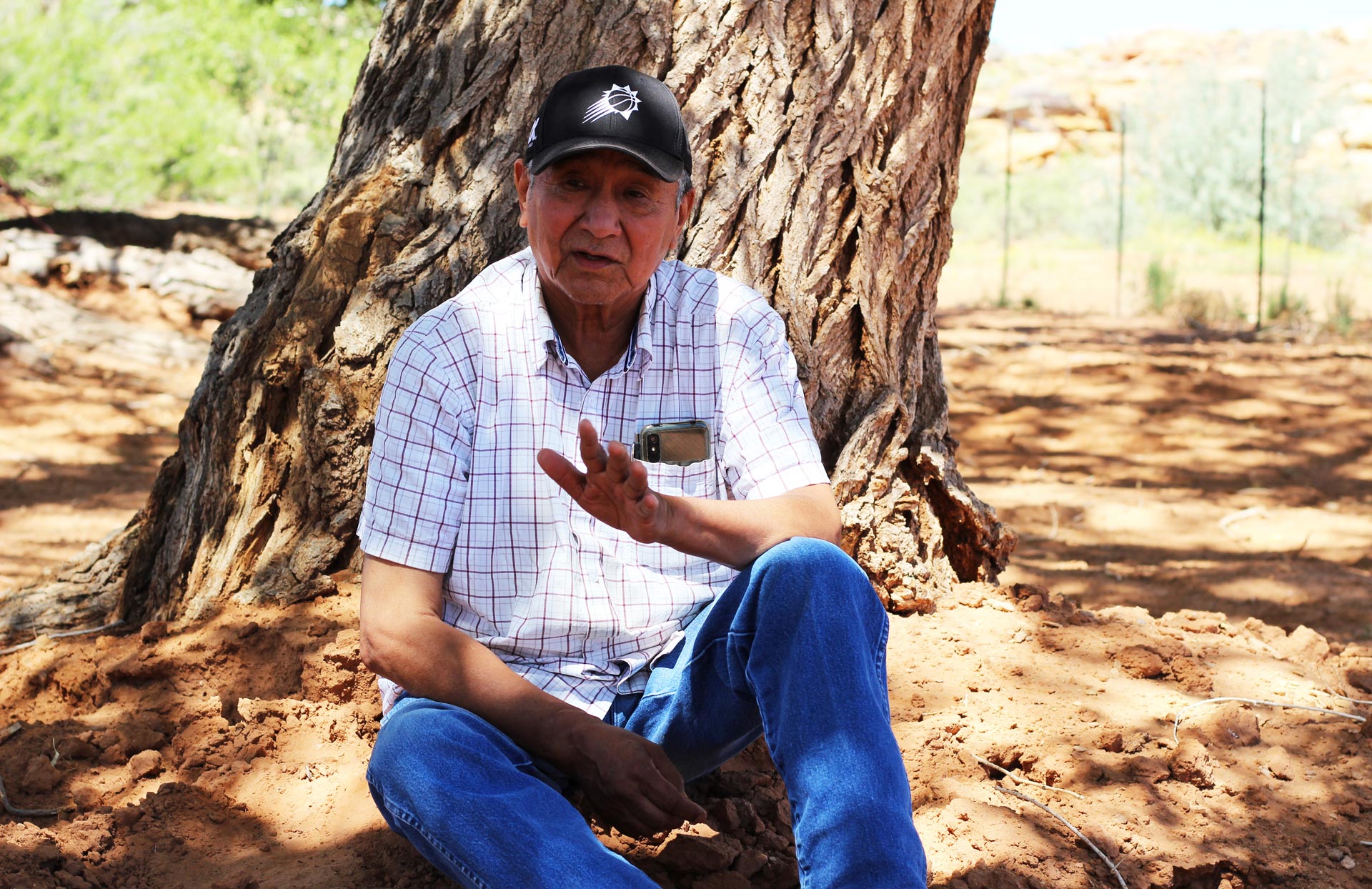 VIEW LARGER Lewis Yazzie sitting under a tree in the backyard of his family home in Dennehotso, Ariz., on Wednesday, Aug. 14, 2024.
VIEW LARGER Lewis Yazzie sitting under a tree in the backyard of his family home in Dennehotso, Ariz., on Wednesday, Aug. 14, 2024. [nat sounds of nature]
Lewis Yazzie: They promised our dad, with a, a big old mansion, like six or five or six room mansion, type of a house never came about. So after the mine shut, everything was forgotten.
PR: Broken promises plagued the Yazzie family, as that was only the start of their mistrust of not only the company but of the federal government. Herbert Yazzie, another son, says the next was safety.
Herbert Yazzie: I will never forgive them about that. They know what uranium is, the quality and the danger that it would bring us and they lied…They lied to us. They lied to my father.
[music fades in]
KM: When radioactive metals like uranium break down in rocks, soil, and groundwater, a colorless, odorless, and tasteless gas called radon can be a result.
KM: Inside the mines, workers faced high levels of radon and at home, dust that stuck to their clothing and shoes would be tracked back in and washed off in the same water that would be used for other purposes inside of the home like washing dishes, laundry and hands.
[music fades out]
Herbert Yazzie: We lived it, we ate it, we drank it, we breathed it. All the duration of that mine is what we did, the livestock that we ate, that nourished our bodies make us grow, the water we drink, the water my mom drink...
KM: Exposure to radon is known as a leading cause of cancer.
Hebert Yazzie: ...and here radon moves slowly. Same thing with cancer. It's got a mind of its own. You can't control it. You can't move it. No matter what you do, radon is going to move and grow, and if you disturb, it gets mad. Mother Nature gets mad.
[music fades in]
KM: Back in 1995, a presidential committee chaired by policy advisor Ruth Faden uncovered a disturbing truth: the federal government had withheld critical information, under the guise of national security. Despite growing evidence associated with uranium mining, the government remained silent.
Ruth Faden during a 1995 Human Radiation Experiment Final Report hearing: We learned much that we did not wish to know. That is to say, we learned things that we wished had not occurred…The committee feels very strongly that this concern about risk, which occurred sometimes not always, nevertheless does not constitute an excuse for the wrongs that were done. Wrong things happened.
KM: That committee found that “as a consequence of exposure to radon and its daughter products in underground uranium mines, at least several hundred miners died of lung cancer and surviving miners remain at elevated risk.".
KM: The government neglected to mandate proper mine ventilation and failed to “adequately warn the miners about the hazards they were exposed to."
[music fades out]
ZZ: Radon gas wasn’t the only issue. The story continues after the break.
[break]
ZZ: This is Tapped, A podcast about water. I'm Zac Ziegler. Let's get back to Katya and Paola's story.
KM: Remember when Navajo activist Leona Morgan talked about the importance of water?
Leona Morgan: Water is life. Water is not just life for us humans, but also, of course, the plants and the animals. But also water itself is a sacred entity, and we need to protect water. We need to protect our sacred entities. We need to protect all of our non-human relatives.
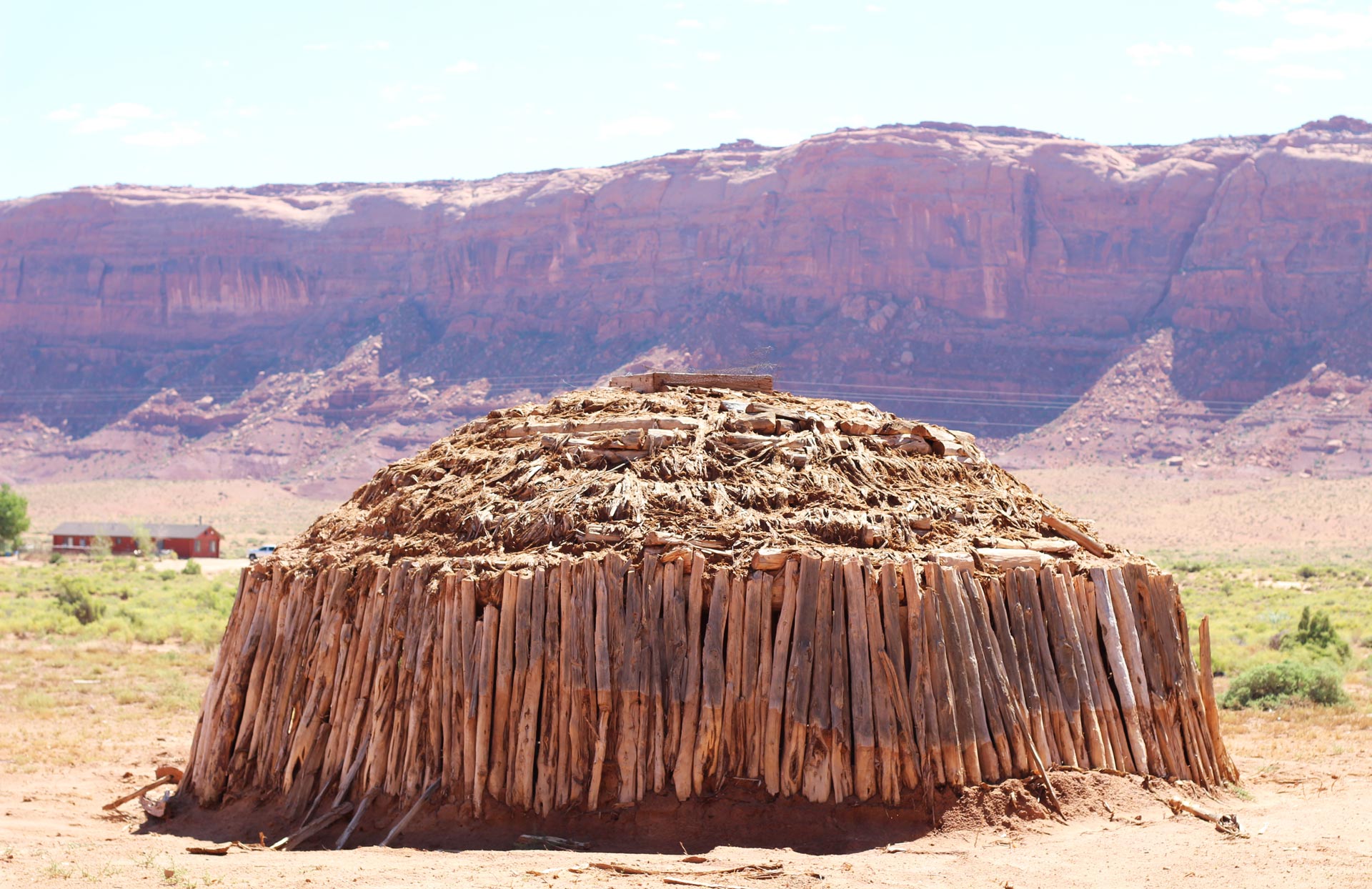 VIEW LARGER A hogan or ceremonial dwelling sits on Yazzie land in Dennehotso, Ariz., Wednesday, Aug. 14, 2024.
VIEW LARGER A hogan or ceremonial dwelling sits on Yazzie land in Dennehotso, Ariz., Wednesday, Aug. 14, 2024. KM: Uranium mining poses a threat to that. Today, one-third of the reservation does not have access to running water…forcing them to either haul water, which can be expensive and inaccessible…or…use unregulated water wells, which are not protected by the Safe Drinking Water Act, and both the tribal and federal governments do not recommend their use.
KM: University of Arizona environmental scientist Joe Hoover, helped create a database of all the unregulated water wells on the Navajo Nation. He found that wells established near abandoned uranium mines had higher contamination levels.
Joe Hoover: What we find is that in with uranium, I think was about 15% of the water sources that we were able to compile data for had concentrations that exceeded the maximum contaminant level, which is 30 micrograms per liter… and then with arsenic, it was about 12% of the water sources had arsenic concentrations exceeding the MCL, which for arsenic is 10 micrograms per liter.
PR: There can be a number of different contaminants.
PR: For the Yazzie family, testing done in their well during 2008 showed lead levels at 320 micrograms per liter. The Environmental Protection Agency’s action level for lead in drinking water is 15 micrograms per liter. Other contaminants included copper, uranium, and arsenic. It is now sealed off and deemed unusable for agriculture, livestock, and even household chores.
[nat sounds of nature]
PR: Even if the Yazzies wanted to fix it, Herbert says they can’t.
Herbert Yazzie: I asked a water crew to repair this pump right here and they didn’t want to do it because it had uranium on it. How’d they know it had uranium on it? They probably saw that little spot right there because uranium can start real small, then it can grow. We’ve seen it…he didn’t want to bring his crew in to repair the pump.
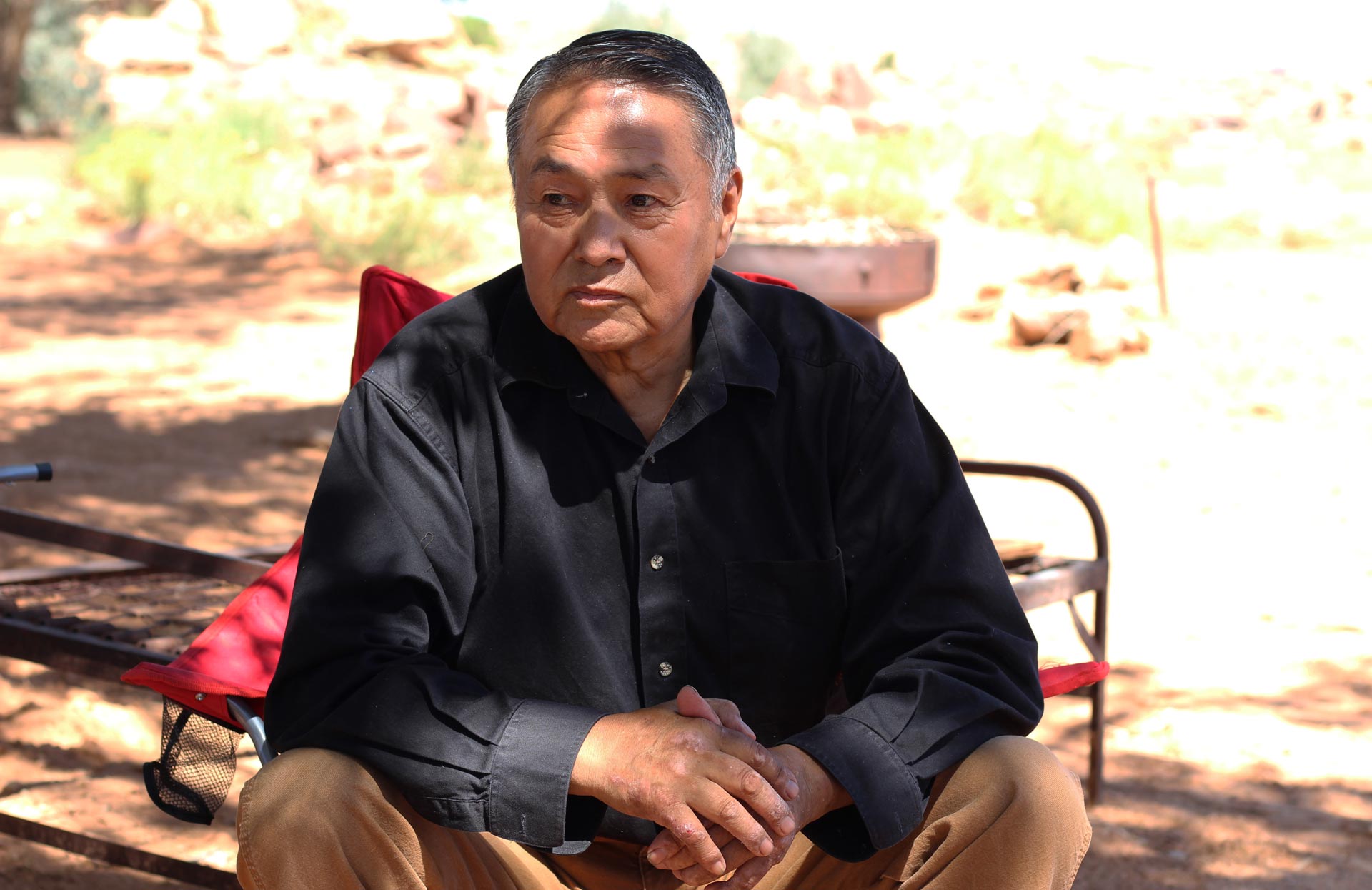 VIEW LARGER Herbert Yazzie listens to his siblings behind their family home in Dennehotso, Ariz., on Wednesday, Aug.14, 2024.
VIEW LARGER Herbert Yazzie listens to his siblings behind their family home in Dennehotso, Ariz., on Wednesday, Aug.14, 2024. [music fades in]
PR: And that was the water source that the Yazzies and their neighbors relied on since there was no piped water.
PR: But how would they know their water source was contaminated if they were never warned?
KM: Monica Yellowhair is the outreach program director for the University of Arizona’s Cancer Center. Her research covers depleted uranium and its effects on DNA, specifically its relation to cancer. She says these companies hired Navajo people who didn’t speak English as their first language and didn’t have a Western education, so they did not know about the dangers.
Monica Yellowhair: They were under the premise of we’re getting free health care, but in actuality, the hospitals that were out there were also monitoring their exposure without telling the miners, and so they were actually tracking a lot of the health effects that these miners were getting and developing.
PR: Jean Curly, one of Luke’s daughters says that, day in, and day out her dad would spend his working days in Monument #2 Mine until it closed in 1968. Unknowingly, his work would slowly poison him.
Jean Curly: We had to go down there, go in and give him his lunch, and all that yucky stuff will be coming down, like, oh my gosh, the yellow…and so we used to give him his lunch and we would just watch him stay there, watch him eat without washing his hand.
[music fades out]
PR: And eventually his family.
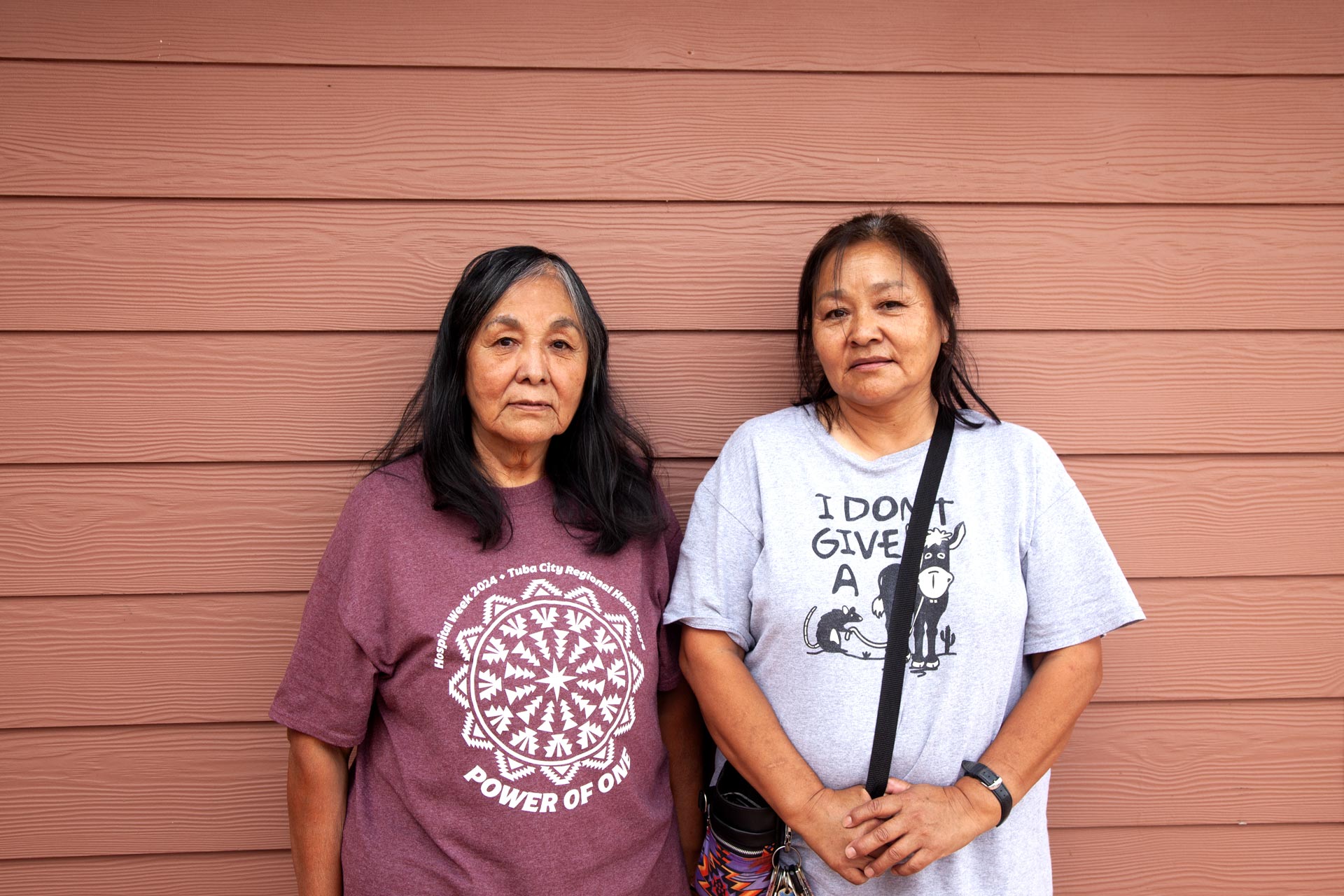 VIEW LARGER Yazzie sisters, Jean Curly and Linda Yazzie outside of Curly's home in Tuba City, Ariz., on Tuesday, Aug. 13, 2024.
VIEW LARGER Yazzie sisters, Jean Curly and Linda Yazzie outside of Curly's home in Tuba City, Ariz., on Tuesday, Aug. 13, 2024. Jean Curly: We would do, you know, dig up the sand, the waste pile and, dig up the sand and crawl in there and have all that sand put on our head… and then we used to eat it too, saying it's a Kool-Aid. We all did.
PR: Luke Yazzie Sr. and his wife, June, would eventually pass away from health complications due to their time around the mine. Luke died from pneumonia from his pulmonary disease and June died from stomach cancer. Now, Herbert says it is just a matter of time before his siblings fall to the mine.
Hebert Yazzie: It grows. It lives. It speaks. It talks. It whispers. Still whispers in my ear because of how I'm affected, and they still haven't told me if I will ever be okay. I never will.
PR: Herbert has skin lesions that he says are due to the mine. Others, like Jean, have different illnesses. In 2018, she was diagnosed with stage 3 uterine cancer. She tried to lean on the federal government to help pay for her treatment, but...
Jean Curly: After I had my cancer, I try to apply, but they told me that that's not the cancer that, that you'll get paid back for. It's just certain cancer, I guess they’re looking for.
KM: Uranium mining victims and downwind communities affected by dust and radiation from explosions can qualify for federal compensation…only if they have a certain primary cancer, says Navajo activist Phil Harrison.
Phil Harrison: You gotta have a positive chest X-ray. You gotta have a failing lungs through a pulmonary function test. You gotta have failing numbers in your blood gas test, carbon dioxide, oxygen. You have to be dying, absolutely dying, to get it to get compensated. People die before they get compensation.
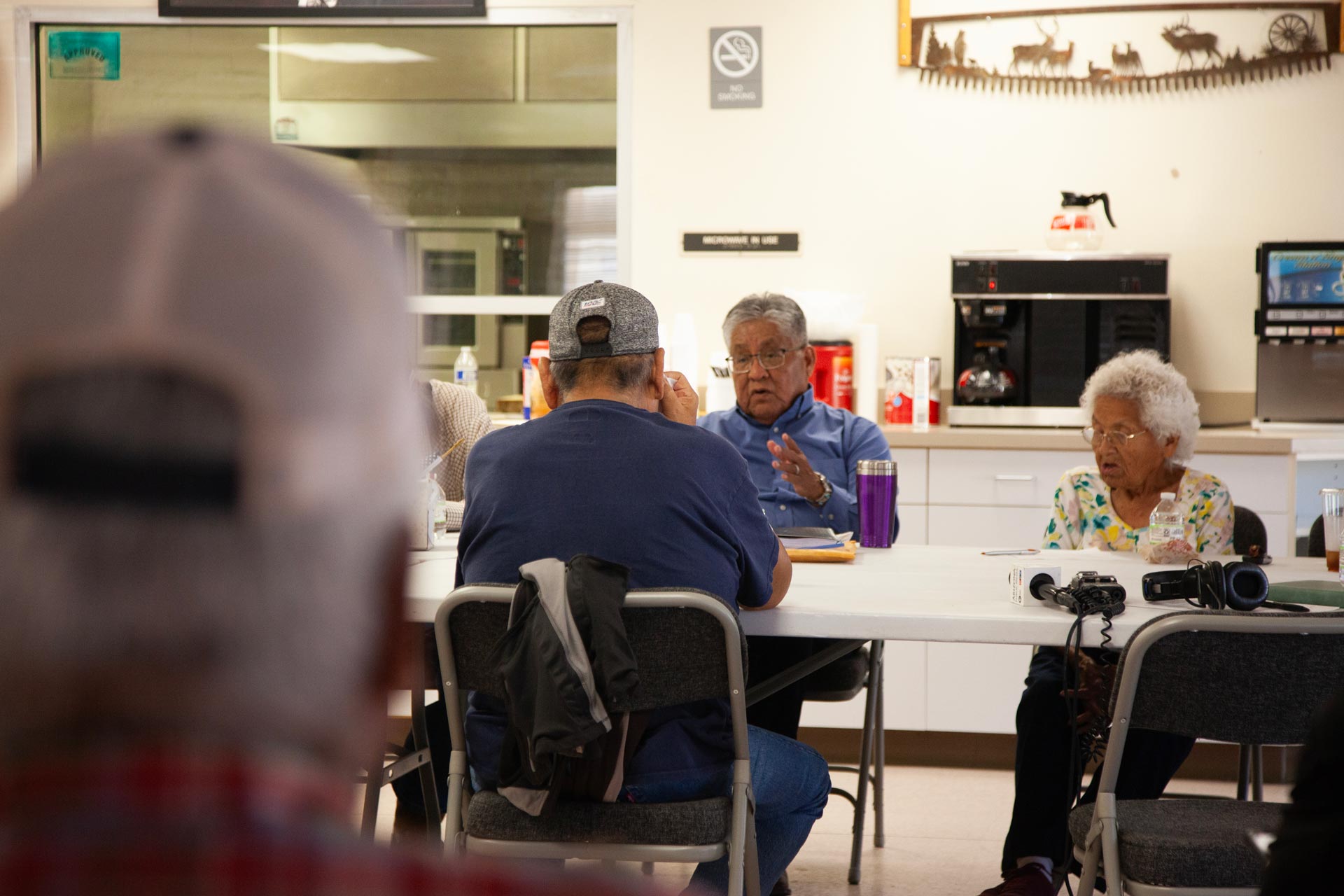 VIEW LARGER Former underground uranium miner and Navajo activist, Phil Harrison at a committee meeting for Navajo uranium mining victims to discuss the Radiation Exposure Compensation Act in Gallup, New Mexico on Friday, July 19, 2024.
VIEW LARGER Former underground uranium miner and Navajo activist, Phil Harrison at a committee meeting for Navajo uranium mining victims to discuss the Radiation Exposure Compensation Act in Gallup, New Mexico on Friday, July 19, 2024. KM: Phil is a former underground uranium miner who has advocated for the expansion of the Radiation Exposure Compensation Act since the early 2000s. Right now, that piece of legislation leaves out key communities like victims from processing sites in Missouri and post-1971 uranium miners. He along with other leaders like Navajo Nation President Dr. Buu Nygren wants to see their people served.
Buu Nygren: But once it gets up to up there, the questions is like, how do we measure that? How much is it going to cost? What is it going to take? And then, obviously, it's not within our authority that things start to be taken out of it…In an ideal world, yes. Those types of people, people that have birth defects and things like that, they should be included, because it was not their fault.
KM: There was a national push for Republican House Speaker Mike Johnson to put the reauthorization act to a vote. But, due to estimated costs, Johnson held the bill despite bipartisan support… effectively letting the compensation act sunset for the first time in over 30 years.
Phil Harrison: I said you pay billions of dollars to 9-1-1 people…9-1-1 Families Act. You pay billions of dollars to Camp Lejeune for the, for the GIs that drink contaminated water. I said, ‘Why are we not included to to get a fair amount of compensation?’, and we've been drinking contaminated water since 1950.
KM: Now, claims filed after June 10th will not be compensated.
PH: Medical bills have mounted, and people are struggling, and yet here, Congress seems like they really don't care, and I don't know why. Maybe because of our skin.
[music fades in]
KM: In Phil’s eyes, it is negligence based on racism. He says uranium miners were the first responders to national security threats during World War II and the Cold War, yet they are being tossed aside.
PH: They didn't get no medals, but they got lung disease.
KM: In Western society, the idea of the American dream is what seemingly is the goal.
PH: Navajos don't know what American dream is, and nobody got there. They were all denied harmony. They were all denied livelihood.
[music fades out]
PR: Families like the Yazzies are left mourning their loved ones.
Jean Curly: Now I miss my parents… (crying) ...I think we all do. My brother, my sister, when we all get together and talk about it, what really happened, and we all don't know why. You know, they didn't let us know that it was dangerous and it was, that it will harm our health too, and it did to my mom, my dad… (crying) ...it’s so hard to talk about.. (crying fades out) ...
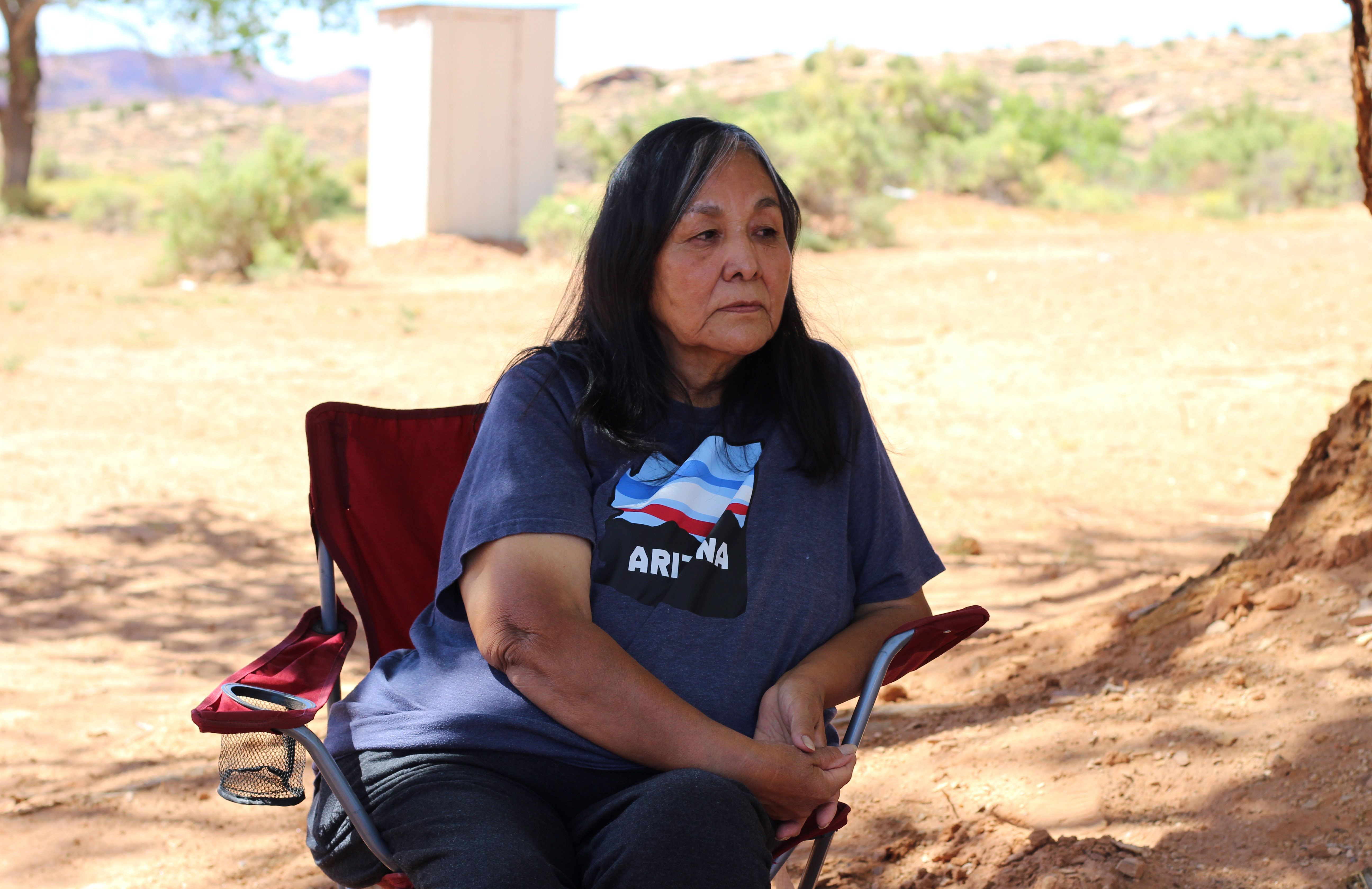 VIEW LARGER Jean Curly sitting in the backyard of her family home in Dennehotso, Ariz., on Wednesday, Aug. 14, 2024.
VIEW LARGER Jean Curly sitting in the backyard of her family home in Dennehotso, Ariz., on Wednesday, Aug. 14, 2024. PR: After 42 years, nearly 30 million tons of uranium ore were extracted from Navajo lands… leaving behind over 500 abandoned uranium mines that still sit on the Navajo Nation. And clean-up still seems out of reach. Monica says that some sites are still accessible.
Monica Yellowhair: A lot of the mine sites, especially the legacy sites, weren't properly sealed off or fenced in and everything. And so you have communities that live next to these mine waste sites. You have people and children able to go in and out of these sites. And a lot of them are not there's no signage in there.
PR: Even if there is some remediation, she is hesitant to call it that.
MY: For the most part, when some of these private-owned companies went in and did I say the word loosely remediation, they pretty much just covered these sites with topsoil.
KM: In March of this year, the Environmental Protection Agency placed the Lukachukai Mountains Mining District, an area of the Navajo Nation, on the Superfund National Priorities List…a first for the tribe. EPA’s Kenyon Larsen says by placing a segment of the reservation on that list, sites in the area will be eligible for long-term federal funding for cleanup. But cleaning up a site doesn’t mean it’s back to its original state.
Kenyon Larsen: The lands that we’re talking about have been significantly impacted by mining and that scar on the land will always be there. Where mining of this extent has occurred, it will take hundreds of years for the land and the earth to repair itself, but the scars will always be there.
KM: Cleaning up the abandoned uranium mines on Navajo land is a process that takes time—it's not just about securing the money.
KM: Stephen Etsitty, the Director of the Navajo Nation's Environmental Protection Agency, says agencies also have to consider things like how to balance Western approaches with traditional, cultural practices.
Stephen Etsitty: We can clean up their home areas. We can minimize all of the risks that they've been living with all this time. But through the whole process, they've learned what they've been living with, and they ask the question daily, ‘what's going to happen to me?’.
PR: And that’s a tough question. The Navajo Nation has contributed significantly to national security through uranium production, but as Navajo President Dr. Buu Nygren points out, the cost has been steep for the people living there today.
BN: In return, we're the ones that are stuck with all these abandoned mines and people still being affected, and even spouses and kids that are, continue to be affected as we move forward every single day.
PR: And RECA, the Radiation Exposure Compensation Act, has fallen short of helping those people.
[music fades in]
PR: Uranium has caused illnesses in the Yazzies for three generations…and they are only one such family.
PR: At this point, Lewis Yazzie and his siblings want one thing.
Lewis Yazzie: Who is there to blame? Who is there to save? I want my elderly, my culture, my tradition to be saved, and what they have promised today is all broken… And I blame the government for not issuing what is in the welfare for the goodness of our people.
PR: He has one message to send.
Lewis Yazzie: Please wake up there in Washington and please help our people and let this…RECA program prolonged to be forever, as long as the third, fourth generation, you know, because that's how far it goes back into our people here.
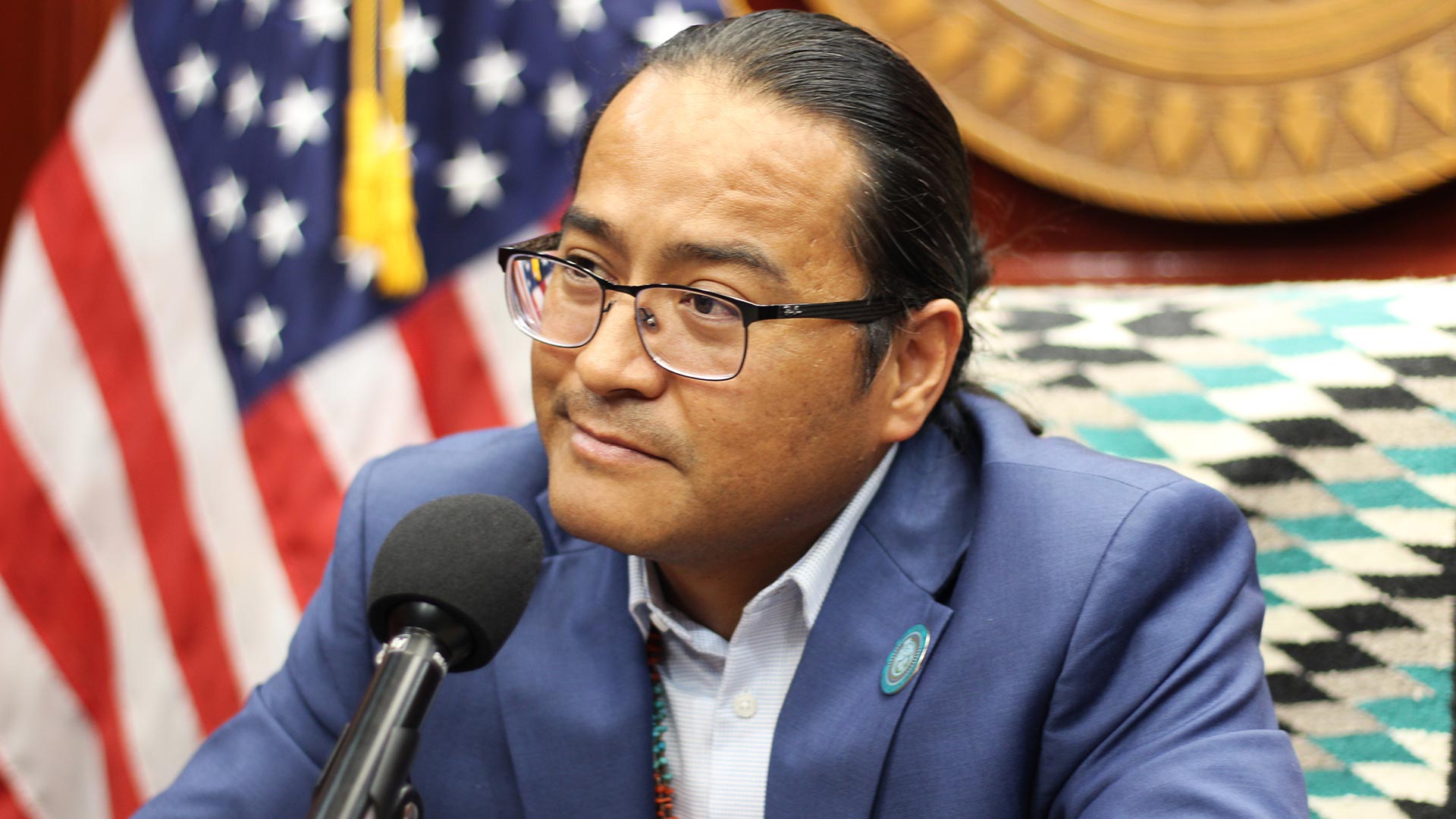 VIEW LARGER President of Navajo Nation Dr. Buu Nygren in Window Rock, Ariz., on Thursday, Aug. 15, 2024.
VIEW LARGER President of Navajo Nation Dr. Buu Nygren in Window Rock, Ariz., on Thursday, Aug. 15, 2024. [music fades out]
ZZ: Monument Valley, a land of striking beauty, holds stories far more complex than the eye can see. It's a place of breathtaking vistas and deep cultural roots, but also one marked by broken promises and enduring scars. The uranium boom brought wealth to some, devastation to others — a dark legacy etched in the land and in the lives of families like the Yazzies.
The effect of that time ripple through the generations, from contaminated water to health problems and the haunting reminder of promises never fulfilled.
And the urgency for solutions only ever grows.
In the words of Navajo President Dr. Buu Nygren:
BN: Our people need water. They're in desperate need of water. And so to me, it's more of, kind of the same scenario that our people are in with a lot of these abandoned uranium mines…when you need water, you need water. I don't know how else to explain it to people. It's like we need it now. The path to healing isn't just about cleaning up the past but building the infrastructure — like water pipelines — that will ensure a clean, safe environment for future generations to come.
[theme music fades in]
ZZ: Thanks for joining us for this season of Tapped. We hope that you're walking away with a bit more of an understanding of how precious water is in Arizona and the southwest, and how we ended up in the situation we are in.
If you enjoyed the season, please tell a friend and rate and review us on your preferred podcast app and we'll be getting to work on the next season really soon. So if you’ve got topics you'd like to hear about or questions that we should be looking into, you can find my email in the show notes.
This episode was written by Paola Rodriguez. Katya Mendoza helped report and produce the episode.
Our theme music is by Michael Greenwald.
At this point in time you usually hear the names of the reporters in the editorial side of things but we’re going to take some time now and give you all the names that make Tapped possible. Let's start with folks who work behind the scenes.
AC Swedbergh posts the show on all of the podcast platforms, creates the graphics for each episode, and helps us coordinate with the NPR Network. He also works on the webpages, along with Jessica Stephens. Ahmaad Lomax does our social media. Steve McMakin designed our logo. Tom Denne made our promotional video.
And then there's the reporting staff. Katya Mendoza reported on four episodes this season. Paola Rodriguez reported on two episodes, as did Danyelle Khmara and Hannah Cree. Danyelle also mixed an episode. AZPM's News Director, Christopher Conover handled editing and reported on five episodes.
And me, Zac Ziegler, the show's host and producer. I reported on 4 episodes and helped on 2 more. And did most of the audio mixing this season.
Visit our website in the podcast section of azpm.org for pictures, links, and more. And I mean this when I say it, thanks for listening.
[theme music fades out]
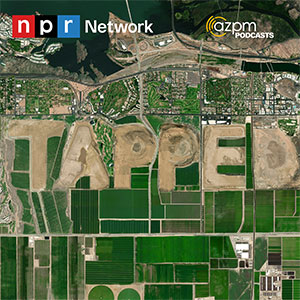



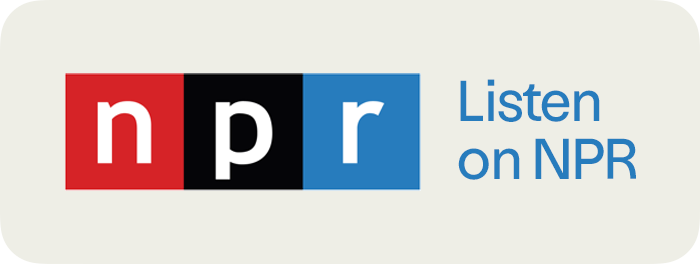

By submitting your comments, you hereby give AZPM the right to post your comments and potentially use them in any other form of media operated by this institution.